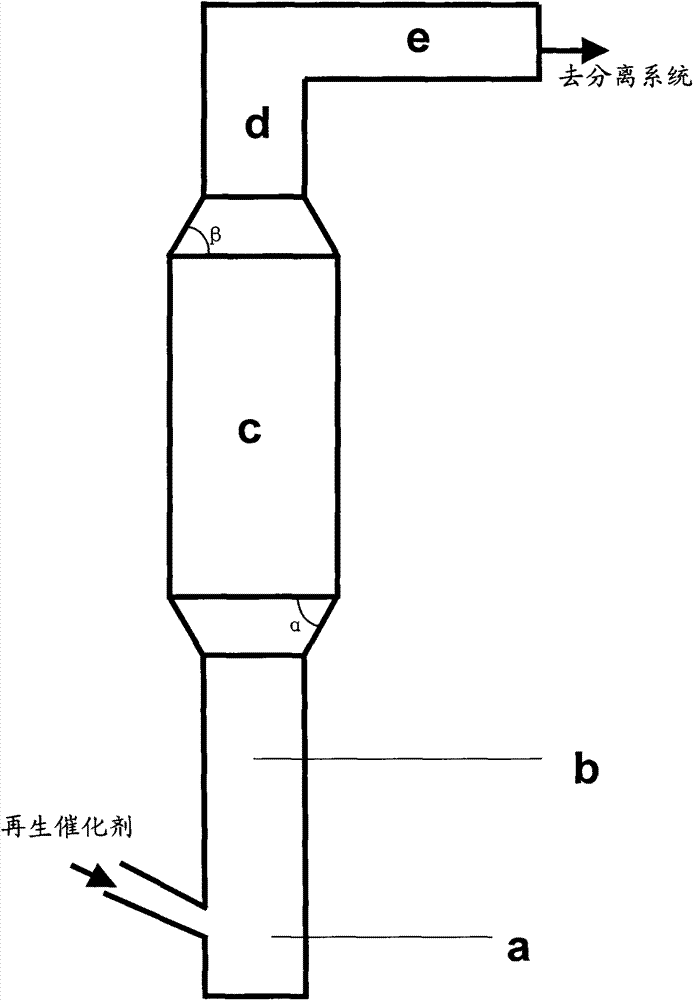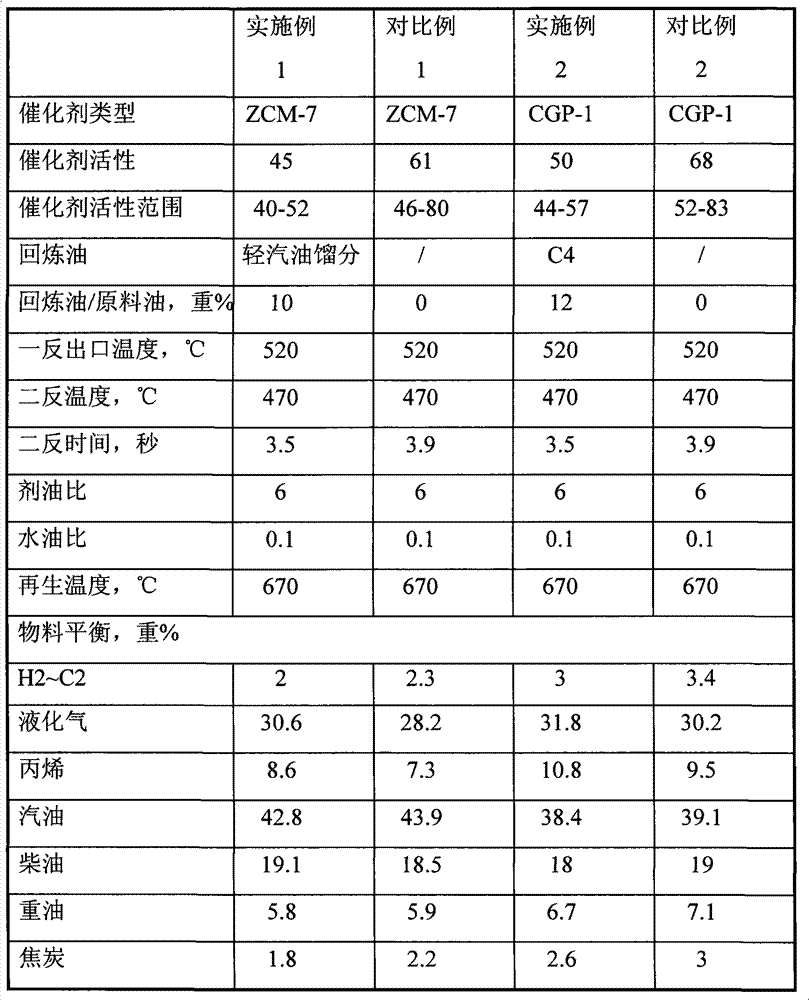Catalytic conversion method for increasing propylene yield
A catalytic conversion method and propylene yield technology are applied in the field of catalytic conversion of prolific low-carbon olefins, which can solve the problems of low ethylene yield and low yield of small molecular olefins, and achieve the reduction of sewage discharge, energy consumption, and The effect of hydrothermal inactivation
- Summary
- Abstract
- Description
- Claims
- Application Information
AI Technical Summary
Problems solved by technology
Method used
Image
Examples
Embodiment 1
[0074] Example 1 illustrates the implementation effect of adopting the catalytic cracking method for increasing the yield of low-carbon olefins provided by the present invention, using a catalytic cracking catalyst with low activity level and uniform activity distribution, and refining light gasoline fractions.
[0075] A medium-sized variable-diameter riser reactor is adopted. The total height of the pre-lift section, the first reaction zone, the second reaction zone, and the outlet zone of the reactor is 15 meters, the diameter of the pre-lift section is 0.025 meters, and its height is 1.5 meters; the first The diameter of the reaction zone is 0.025 meters, and its height is 4 meters; the diameter of the second reaction zone is 0.1 meters, and its height is 6.5 meters; the diameter of the outlet zone is 0.025 meters, and its height is 3 meters; The apex angle of the isosceles trapezoid in the longitudinal section is 45°; the base angle of the isosceles trapezoid in the longit...
Embodiment 2
[0078] Example 2 illustrates the implementation effect of using different catalysts with low activity and uniform activity distribution in the catalytic cracking method for producing more light olefins provided by the present invention.
[0079] Example 2 uses the same medium-sized variable-diameter riser reactor as in Example 1, catalytic cracking feedstock oil and the same operating steps. The difference from Example 1 is that the catalyst used is CGP-1 catalyst aged at 800° C. with 100% steam for 30 hours, and the activity is 50. The C4 fraction obtained by separating the reaction product was subjected to figure 2 The middle line 6 is injected into the bottom of the second reaction zone of the riser, and the composition of the C4 fraction is shown in Table 3. The reaction conditions, product distribution and gasoline product properties are listed in Table 4.
PUM
 Login to View More
Login to View More Abstract
Description
Claims
Application Information
 Login to View More
Login to View More - R&D
- Intellectual Property
- Life Sciences
- Materials
- Tech Scout
- Unparalleled Data Quality
- Higher Quality Content
- 60% Fewer Hallucinations
Browse by: Latest US Patents, China's latest patents, Technical Efficacy Thesaurus, Application Domain, Technology Topic, Popular Technical Reports.
© 2025 PatSnap. All rights reserved.Legal|Privacy policy|Modern Slavery Act Transparency Statement|Sitemap|About US| Contact US: help@patsnap.com



